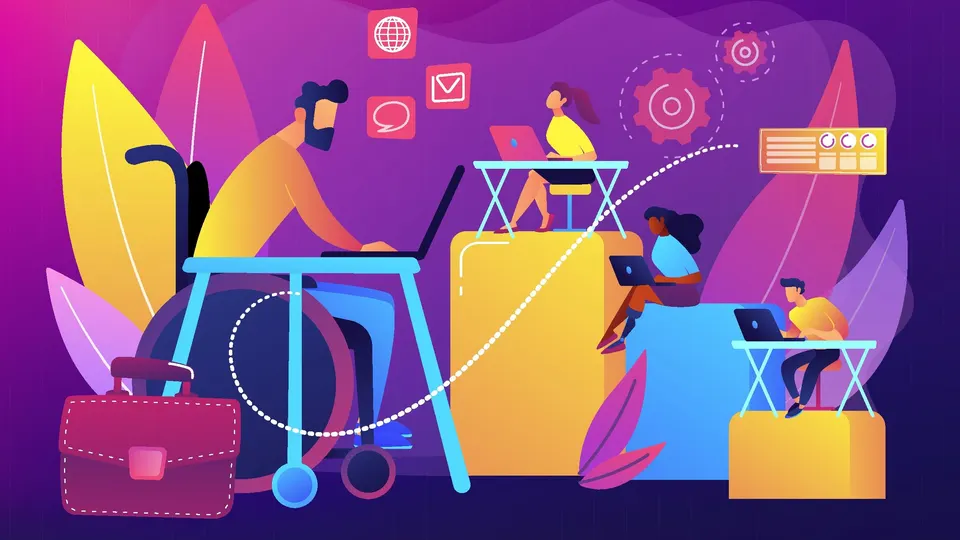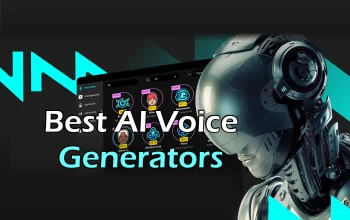
In recent years, technological advancements have significantly improved the quality of life for people with disabilities. From enhancing mobility to improving communication and accessibility, these innovations are breaking down barriers and enabling greater independence. Here, we explore the top technological advancements that are supporting and empowering individuals with disabilities.
Table of Contents
1. Assistive Mobility Devices
Overview:
Mobility devices are crucial for individuals with physical disabilities, enabling them to move freely and participate in daily activities. Advances in technology have led to the development of sophisticated assistive devices that offer enhanced functionality and comfort.
Key Innovations:
- Powered Wheelchairs: Modern powered wheelchairs, such as those from Permobil and Invacare, are equipped with advanced features like adjustable seating, joystick controls, and even smart technology that can monitor the user’s health and wheelchair performance. These wheelchairs provide increased mobility and independence for users.
- Exoskeletons: Exoskeletons, such as those developed by companies like Ekso Bionics and ReWalk Robotics, are wearable devices that help individuals with spinal cord injuries or other mobility impairments to stand and walk. These devices use sensors and motors to assist with movement, providing a new level of mobility and rehabilitation.
- Smart Canes: Smart canes, like the WeWALK cane, are equipped with ultrasonic sensors that detect obstacles and provide haptic feedback to the user. These canes also integrate with smartphones, offering navigation assistance and other smart features to enhance the user’s experience.
Future Impact:
Advancements in mobility devices are transforming the lives of individuals with physical disabilities, offering greater independence and improved quality of life. As technology continues to evolve, these devices will become even more accessible, affordable, and tailored to individual needs.
2. Augmentative and Alternative Communication (AAC) Devices
Overview:
AAC devices are essential for individuals with speech and language impairments, providing alternative methods for communication. These technologies range from simple communication boards to sophisticated speech-generating devices.
Key Innovations:
- Speech-Generating Devices: Devices like the Tobii Dynavox use eye-tracking technology to enable individuals with conditions such as ALS or cerebral palsy to communicate by selecting words and phrases on a screen. These devices can convert text to speech, allowing users to express themselves verbally.
- Mobile Apps: AAC apps, such as Proloquo2Go and TouchChat, are designed for tablets and smartphones, providing portable and customizable communication solutions. These apps offer a wide range of vocabulary and symbols, enabling users to create messages and interact with others.
- Wearable Technology: Innovations like Google Glass have been adapted for AAC purposes, allowing users to control communication apps with head movements or voice commands. This hands-free approach offers a discreet and efficient way for individuals to communicate.
Future Impact:
AAC devices are crucial for enabling communication and social interaction for individuals with speech and language impairments. Continued advancements in technology will lead to more intuitive, user-friendly, and affordable AAC solutions, further enhancing the communication abilities and social integration of users.
3. Smart Home Technology
Overview:
Smart home technology is making homes more accessible and comfortable for individuals with disabilities. These technologies enable users to control various aspects of their environment through voice commands, smartphone apps, or automated systems.
Key Innovations:
- Voice Assistants: Voice-activated assistants like Amazon Alexa, Google Assistant, and Apple Siri can control lights, thermostats, door locks, and other smart home devices. This hands-free control is particularly beneficial for individuals with mobility impairments.
- Automated Systems: Smart home systems can automate daily tasks, such as opening and closing curtains, adjusting lighting, and controlling appliances. Companies like Control4 and Crestron offer comprehensive home automation solutions that can be customized to meet individual needs.
- Accessibility Features: Many smart home devices now include accessibility features designed specifically for people with disabilities. For example, smart doorbells with video capabilities, like Ring, allow users to see and communicate with visitors from their smartphones, enhancing security and convenience.
Future Impact:
Smart home technology is revolutionizing the way individuals with disabilities interact with their living environments. As these technologies become more advanced and integrated, they will provide even greater levels of accessibility, comfort, and independence.
4. Wearable Health Monitors
Overview:
Wearable health monitors are providing individuals with disabilities and chronic conditions with real-time health tracking and monitoring. These devices can collect and analyze health data, alert users and caregivers to potential issues, and help manage health conditions.
Key Innovations:
- Smartwatches: Devices like the Apple Watch and Fitbit can monitor heart rate, activity levels, sleep patterns, and even detect falls. These features are particularly valuable for individuals with conditions such as epilepsy or heart disease, providing early warning signs and emergency assistance.
- Medical Alert Systems: Wearable medical alert systems, like Life Alert and Medical Guardian, offer emergency assistance at the push of a button. These devices often include GPS tracking and automatic fall detection, ensuring help is available when needed.
- Continuous Glucose Monitors (CGMs): For individuals with diabetes, CGMs like the Dexcom G6 provide real-time glucose monitoring, alerting users to high or low blood sugar levels. This technology helps manage diabetes more effectively and reduces the risk of complications.
Future Impact:
Wearable health monitors are enhancing the ability of individuals with disabilities to manage their health and live independently. As wearable technology continues to improve, it will offer more accurate and comprehensive health monitoring, leading to better health outcomes and increased autonomy.
5. Virtual Reality (VR) and Augmented Reality (AR)
Overview:
VR and AR technologies are creating new opportunities for rehabilitation, education, and social interaction for individuals with disabilities. These immersive technologies can provide therapeutic experiences, enhance learning, and facilitate social engagement.
Key Innovations:
- Rehabilitation Therapy: VR systems like those developed by MindMaze and XRHealth are being used in physical and occupational therapy to create engaging and effective rehabilitation programs. These systems can simulate real-world environments and tasks, helping patients improve motor skills, balance, and coordination.
- Educational Tools: AR apps like those from Merge EDU and CoSpaces EDU provide interactive and engaging learning experiences for students with disabilities. These tools can make abstract concepts more tangible and accessible, enhancing understanding and retention.
- Social Interaction: VR platforms like AltspaceVR and Rec Room offer virtual environments where individuals can interact, socialize, and participate in activities. These platforms provide opportunities for social engagement and community building, reducing feelings of isolation.
Future Impact:
VR and AR technologies are opening up new possibilities for therapy, education, and social interaction for individuals with disabilities. As these technologies become more advanced and accessible, they will provide increasingly valuable tools for enhancing quality of life and promoting inclusion.
Conclusion
Technological advancements are playing a pivotal role in supporting and empowering individuals with disabilities. From assistive mobility devices and AAC solutions to smart home technology, wearable health monitors, and VR/AR applications, these innovations are breaking down barriers and enhancing independence. As technology continues to evolve, it will further transform the lives of people with disabilities, creating a more inclusive and accessible world.


